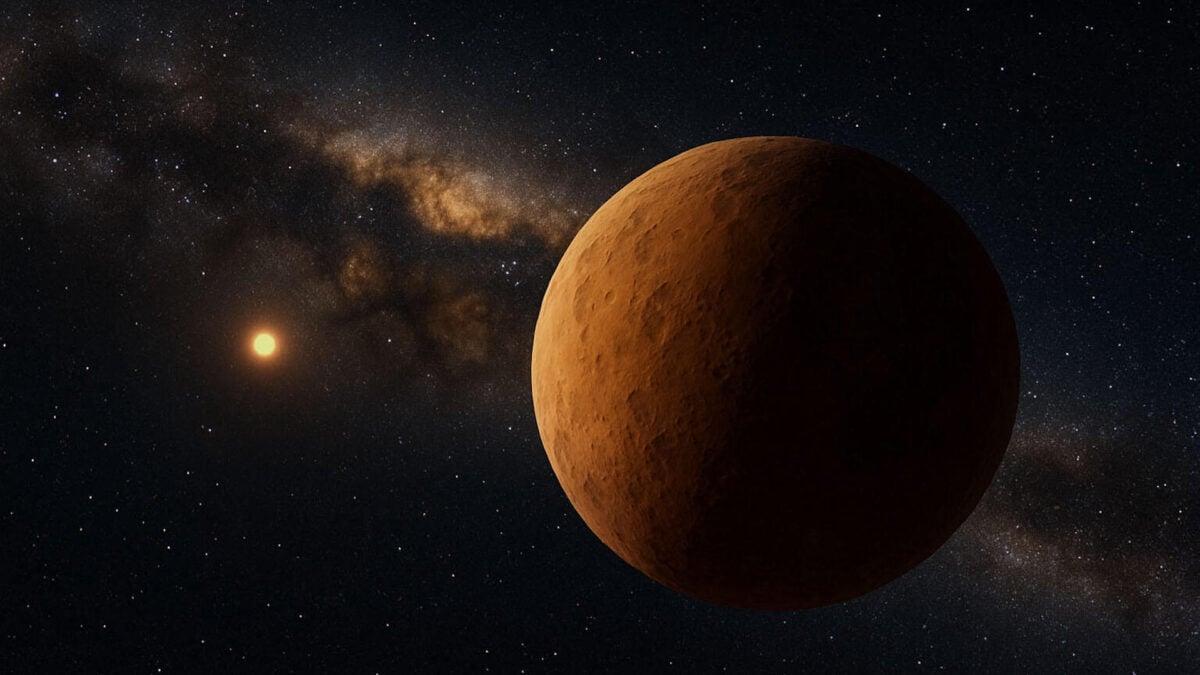Astronomers Discover Potential Dwarf Planet Lurking Way Beyond Pluto

Astronomers in Japan have spotted a distant object orbiting the Sun far beyond Neptune, pointing to an extraordinary event that took place during the earliest years of the solar system.
Astronomers used the Subaru Telescope, perched atop a dormant volcano in Hawaii, to make the discovery. They observed a small object orbiting at a farthest distance of 252 AU from the Sun, in which one astronomical unit equals the average distance between the Sun and Earth. Scientists gave it the formal designation 2023 KQ14 and nicknamed it Ammonite, after an extinct group of marine animals—a nod to its status as an extreme relic of the early solar system.
For reference, Pluto’s average distance from the Sun is about 40 AU, so 2023 KQ14 is quite distant. At 23.4 billion miles (37.7 billion kilometers) away, light reflecting off Ammonite takes approximately 34 hours to reach Earth.
The discovery, published in Nature Astronomy on Tuesday, marks the fourth detection of a “Sednoid.” This group of distant, trans-Neptunian objects have extremely elongated orbits that stretch past the Kuiper Belt. Unlike other objects that orbit the Sun past Neptune, Sednoids are detached from the giant planet, meaning they are not influenced by its gravitational field. Astronomers discovered the first Sednoid, named Sedna, in 2003.

Astronomers first discovered Ammonite in 2023 through Subaru’s survey project, FOSSIL (Formation of the Outer Solar System: An Icy Legacy). Follow-up observations in July 2024 using the Canada-France-Hawaii Telescope confirmed the discovery, revealing the object’s orbit. It was also spotted in archive images taken in 2021 and 2014, allowing astronomers to simulate its orbit with greater accuracy.
Using computer simulations, the researchers behind the discovery suggest that Ammonite has maintained a stable orbit for at least 4.5 billion years. At its closest approach to the Sun, it comes within 66 AUs from the star. Unlike its Sednoid counterparts, Ammonite currently follows a different orbit. The simulations, however, indicated that the orbits of all four known Sednoids were once very similar around 4.2 billion years ago. This puts into question the existence of the theorized Planet Nine.
Sednoids are one of the key pieces of evidence behind the long-held theory that a massive ninth planet orbits the Sun beyond Neptune. The group of small objects follows an oddly aligned, elongated orbit that can’t be explained based on the gravitational influence of the known planets of the solar system, suggesting that a ninth, undiscovered planet may be tugging at the Sednoids.
“The fact that Ammonite’s current orbit does not align with those of the other three sednoids lowers the likelihood of the Planet Nine hypothesis,” Yukun Huang, a researcher at the National Astronomical Observatory of Japan who carried out the simulations of Ammonite’s orbit, said in a statement. “It is possible that a planet once existed in the Solar System but was later ejected, causing the unusual orbits we see today.”
Ammonite is estimated to be between 136 and 236 miles wide (220 and 380 kilometers). Although tiny, its presence is indicative of something much larger at play. “Ammonite was found in a region far away where Neptune’s gravity has little influence. The presence of objects with elongated orbits and large perihelion distances in this area implies that something extraordinary occurred during the ancient era when Ammonite formed,” Fumi Yoshida, a planetary scientist and co-author of the new study, said in a statement. “Understanding the orbital evolution and physical properties of these unique, distant objects is crucial for comprehending the full history of the solar system.”









